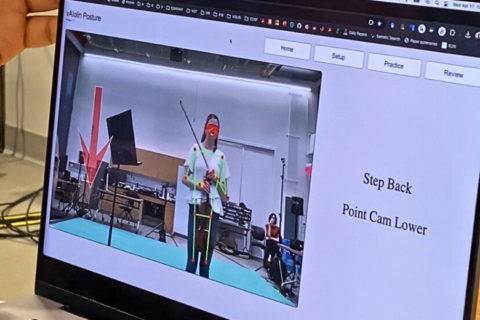
The 2020 Census kick-started efforts to redraw congressional district lines based on new population data, a decennial process known as redistricting.
That, in turn, triggered all-too-familiar political battles as Democrats and Republicans fight for representation.
The stakes are high: Redistricting can artificially tilt the balance of power in tight races. That may have huge implications in the 2022 midterm elections, which will determine who controls the U.S. House, where Democrats currently have a narrow four-seat advantage.
Maryland has become embroiled in this political tug of war, with not one, but two redistricting commissions — one created by Republican Gov. Larry Hogan and the other by Maryland’s Democratic-controlled General Assembly — working to shape the map ahead of the 2022 midterms.
And both are holding meetings this week to get the public’s input on how that map should be drawn.
The fight over redistricting
Democrats have long accused Republicans of gerrymandering, using their control of state legislatures to manipulate boundary maps to create GOP strongholds — Republicans currently control 30 state legislatures, compared to 18 for Democrats.
But in recent years, Democrats have been accused of doing the same in an effort to catch up to Republicans. Maryland, which has experienced 7% growth since the 2010 Census, has found itself in the middle of this debate.
In 2011, then-Maryland Gov. Martin O’Malley, a Democrat, wrote in USA Today that he drew a map that elected an additional Democrat to the House to push back against Republican governors who “carve Democratic voters into irrelevance in state after state in order to help elect lopsided Republican congressional delegations.”
But O’Malley added that he hoped the Supreme Court would ultimately end partisan redistricting. In a 2019 decision that broke along ideological lines, however, the Supreme Court ruled 5-4 that courts have no say over partisan gerrymandering.
In 2015, Gov. Larry Hogan, a Republican, launched an effort to end gerrymandering in his Democratic-leaning state. The result is the Maryland Citizens Redistricting Commission, which is composed of nine members: three registered Democrats, three registered Republicans and three registered nonaffiliated voters.
Meanwhile, the Maryland General Assembly launched its own bipartisan Legislative Redistricting Advisory Commission, convened by Senate President Bill Ferguson, D-Baltimore City, and House Speaker Adrienne Jones, D-Baltimore County.
Both commissions are soliciting input from the public to develop new maps for the U.S. House of Representatives, as well as the Maryland State Senate and House of Delegates.
It’s a monthslong process, with numerous public and private meetings. Hogan will take the Maryland Citizens Redistricting Commission’s recommendations and present them as a bill to the General Assembly, which is expected to hold a special session on redistricting in December.
The General Assembly, which also will consider proposals from its own legislative commission, has the final say over what Maryland’s maps will ultimately look like.
Hogan cannot veto the General Assembly’s plans for state legislatures. He can, however, veto the congressional maps for the U.S. House, but the assembly can override that veto — and with Democrats holding a supermajority, they’ve been able to override Hogan’s vetoes in the past.
Hogan’s Citizens Commission
Walter Olson is co-chair of the Maryland Citizens Redistricting Commission and a senior fellow at the libertarian Cato Institute. He told WTOP that ending gerrymandering has been one of Hogan’s “signature issues,” and the idea behind the Citizens Commission is to redraw districts “that would not be based just on political advantage.”
Among the “marching orders” given to the commission were for them to consider “compactness” and respect county and municipal boundaries.
Olson said the commission cannot “base any of its deliberations on political data, such as party registration in any locality or past election results,” or other factors that would benefit a particular party or candidate.
“One of the things that you notice about the existing congressional map from Maryland that is so notorious is that it keeps crisscrossing county lines for no particularly good reason,” he said.
He declined to talk about the Maryland General Assembly’s commission, because “our job is to stay away from partisan politics as much as possible.”
But he did say that clear differences are emerging between the Citizens Commission’s proposal for congressional redistricting versus the current map that was developed 10 years ago.
“Western Maryland, which is very artificially split in the map inherited from 10 years ago, is kept whole in our map,” Olson said, also citing Anne Arundel County, which was “split into four pieces in the map from 10 years ago (but is) kept in one large piece and one small piece in our map. So those congressional maps are very, very different.”
Tonight the Maryland Citizens Redistricting Commission voted unanimously to approve a proposed Congressional map for public comment. Hearings at which the public can testify are set for each Wednesday evening in October at 6 p.m. /1 pic.twitter.com/NBIBm25QVo
— Walter Olson (@walterolson) September 30, 2021
But Olson noted that population growth will also reshape districts — regardless of politics.
“Some counties have been very fast-growing, like Frederick County, Charles County, Howard County (and) Prince George’s County,” he said. “And as a result, they are going to have more clout in the Maryland Senate because the districts have to be redrawn to acknowledge that their population has gone up.”
On the flip side, parts of the state with declining populations will see their representation go down. Olson said that includes far Western Maryland, much of the Eastern Shore and Baltimore City.
Seeking public feedback
Olson said another important feature of the Citizens Commission is that it’s been releasing its map drafts throughout the process, so that the public can respond to them at hearings.
The Legislative Redistricting Advisory Commission is holding public hearings, with a total of 12 scheduled through Nov. 18. But it won’t be releasing map drafts until the commission is ready to release its final proposal to the public.
Olson said the Citizens Commission’s release of drafts “allowed the public to see what the thought process was as it was going on.”
He cited one proposed map for the Maryland State Senate that drew a lot of pushback.
“When we released the state Senate map, it changed around the lines in Southern Maryland, in St. Mary’s County in particular. And a lot of people in St. Mary’s County didn’t like the new way the lines were drawn — and boy, did we ever hear from them,” Olson laughed.
“I think more than 100 emails came out, and a lot of people showed up at a hearing from St. Mary’s County and said in their own words … that they didn’t like the way the map broke St. Mary’s between two districts. And we listened and we … fixed it because that’s the beauty of the process in which the public can see maps as they go along. As such, they can offer advice while it still has time to make a difference.”
The Citizens Commission will begin its third round of virtual meetings on Oct. 6, when it will present final map drafts to the public.
Round three meetings will allow Marylanders to discuss the proposed legislative and congressional maps that will be posted at redistricting.maryland.gov. These maps were created following 29 public meetings since May 5 and took into account 69 maps submitted by the public, according to a news release.
Meanwhile, the Legislative Redistricting Advisory Commission will hold its own public hearing on Oct. 5, part of a dozen in-person and virtual public meetings the commission has planned.
The commission will be chaired by Karl Aro, the former executive director of the nonpartisan Department of Legislative Services. Members of the commission also include:
- Senate President Bill Ferguson, D-Baltimore City;
- House Speaker Adrienne A. Jones, D-Baltimore County;
- Senate President Pro Tempore Melony Griffith, D-Prince George’s County;
- House Majority Leader Eric Luedtke, D-Montgomery County;
- Senate Minority Leader Bryan W. Simonaire; R-Anne Arundel County.
- House Minority Leader Jason Buckel; R-Allegany County.
Ferguson told Maryland Matters that public input will be “absolutely essential” to the commission’s work.
“We will have a fair and transparent process, and in order for that to happen we need to hear from the public,” he said.
I’m on my way to Western Maryland for the second of 12 public meetings that the Legislative Redistricting Advisory Commission will hold in every region of the State. It’s vital that you to let your voice be heard by the legislature as we fulfill our cons … https://t.co/NZh2aIOO0M pic.twitter.com/xsQcHeqGVK
— Bill Ferguson (@SenBillFerg) September 29, 2021








